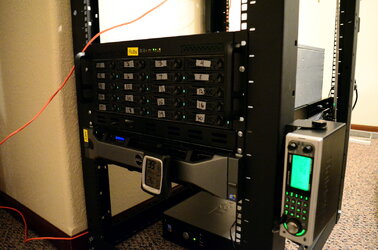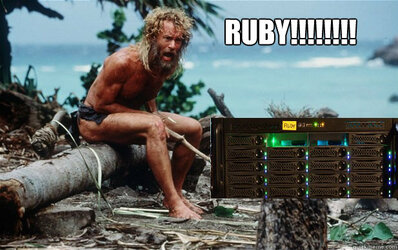It isn't a final decision. I just wanted to get Ruby off of (literally) sitting on top of the R710. Going with the R510 and SAS expander is an option, but I still have to think on it. It limits me in certain areas, but opens up in others. For one, it will draw less power and put out less heat, which will be nice. On the other hand, it has only 16 drive bays unless I buy another unit.
If I could use the internal SAS bays of the R510 with the M1015, that would give me four more slots minimum, eight if I wanted them all. And it isn't that I can't do it, that part is very easy. The problem is that the server will complain (orange light) if it doesn't see both SAS backplanes. I can ignore this, but if a real problem occurs, I won't notice.
I've always told people that when you build a system or do an upgrade, don't build it at capacity. Meaning, if you need 4 TB disk space now, build it slightly bigger in case you need more immediately, and allow for the addition of more disks in case you need more in the future. That way you aren't wasting money by having to constantly rebuild the server every time you hit the cap. I follow my own advice.
 mine isnt.
mine isnt. mine isnt.
mine isnt.

